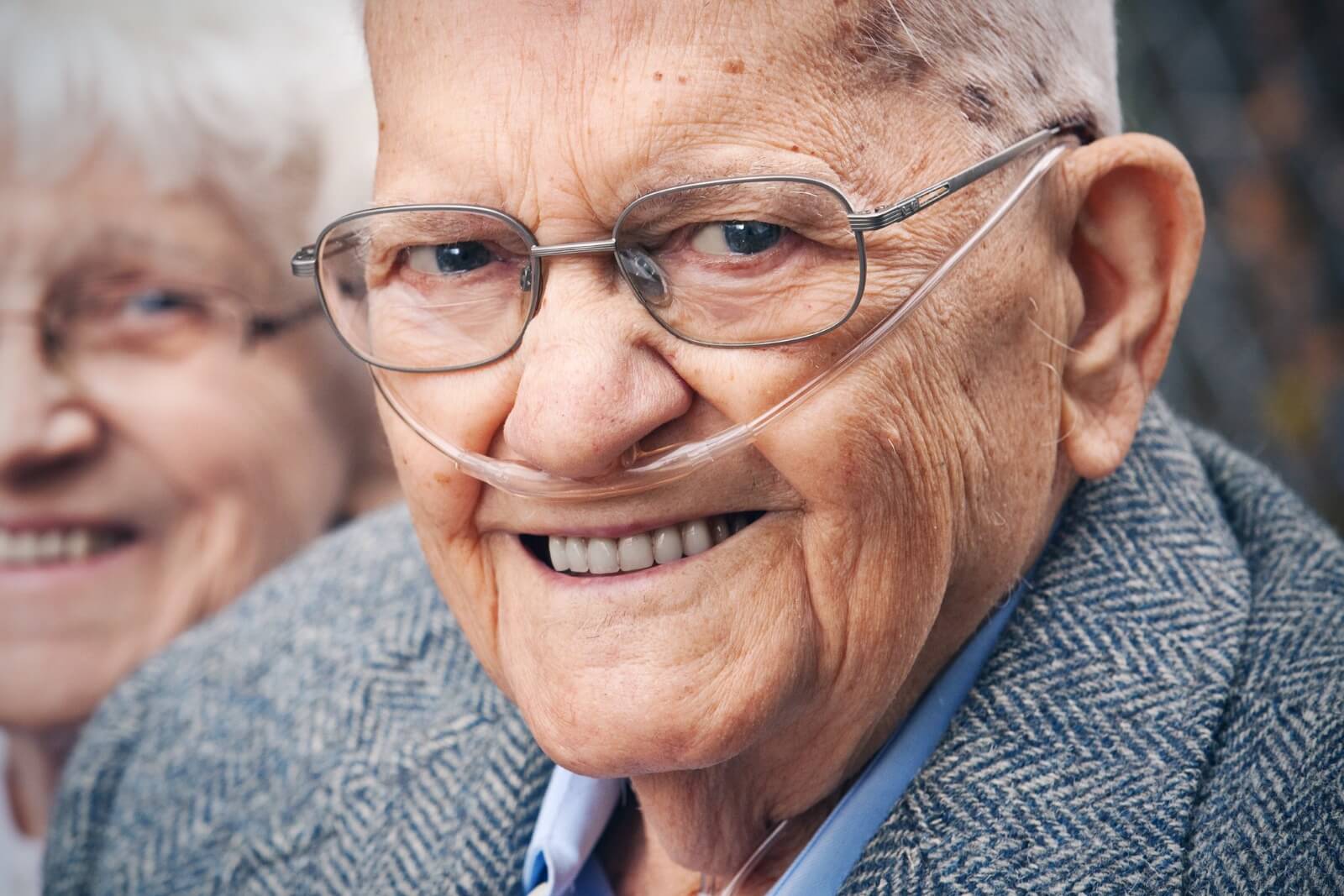[Last updated on December 3, 2024]

The U.S. Department of Veterans Affairs (VA) offers benefits that give additional income to wartime Veterans and spouses with low income and long-term care needs. These benefits are Aid and Attendance, Housebound Allowance, and VA Pension. If you’ve heard of these benefits, you may know they’re complex and have questions about qualifying and applying for them. This guide explains how these benefits help you pay for senior care.
First, know that these benefits are related to each other. Some offer more income than others, and some can be combined while others cannot. Essentially, the VA Pension is the base-level benefit. The Housebound Allowance can be added to the VA Pension for a bit more income, or the Aid and Attendance can be added to the VA Pension for the highest monthly benefit.
In the sections below, we’ll explain the qualifications and details for each so you can learn about this set of benefits and how they can help you pay for long-term care.
How are the benefit amounts determined?
VA sets a maximum benefit amount for each benefit and may adjust these amounts annually when considering the cost-of-living adjustment (COLA) set by the Social Security Administration. Based on the review, the changes happen on December 1 every year for the following 12 months.
How can recipients use the money?
Recipients of the benefits receive the monthly payments directly in their bank accounts from VA. Money received from all the benefits is considered income so that recipients can use it for household or personal expenses. Because most recipients have health issues related to the qualifying health factors for these benefits, they often have extensive medical or long-term care services expenses to cover. The income from the benefits helps offset those costs.
Can spouses of Veterans qualify for these VA benefits?
The short answer is yes: If they qualify, spouses of Veterans can also receive the benefits. To qualify as a spouse, the Veteran must meet the military service criteria. The spouse’s household must meet the net worth criteria. The spouse must also meet the health criteria.
Another factor determining whether Veterans’ spouses qualify for these benefits is their marital status with the Veteran. A spouse must be currently married to the Veteran or must have been married to the Veteran at the time of the Veteran’s passing. With few rare exceptions, the spouse cannot be divorced from the Veteran or have remarried after the Veteran’s death.
Spouses can only apply for any of these benefits directly if the Veteran is deceased. If the Veteran is still living and the spouse is the only individual of the couple who requires care, the Veteran submits the application for the married benefit amount based on household medical expenses. We will cover what the married benefit amount is in a later section.
Can you combine VA Pension, Housebound Allowance, and Aid and Attendance?
You can combine some of these benefits but not all. There are three ways to get the benefits:
- VA Pension alone (if you don’t also qualify for Housebound or Aid and Attendance).
- VA Pension with Housebound Allowance (if you also qualify).
- VA Pension with Aid and Attendance (if you also qualify).
Notice how you cannot combine the Housebound Allowance with Aid and Attendance. That’s because the health-related qualifying factors are two different situations. Depending on the applicant’s needs, they qualify for one or the other. VA assesses the application and the applicant’s health and awards either the Housebound Allowance or Aid and Attendance if the applicant is eligible for one of the two. It may help to think about the VA Pension as the base-level benefit. VA will allow you to add either the Housebound Allowance or Aid and Attendance if you qualify, but you cannot add both simultaneously to the VA Pension.
Qualification criteria for VA Pension, Housebound Allowance, and Aid and Attendance
There are four areas of criteria that applicants must meet to qualify for any of these benefits:
- The Veteran has qualifying military service.
- The household does not exceed the maximum net worth.
- The household does not exceed the income limit.
- The person who needs care meets certain health-related criteria.
For all three benefits, the military service, net worth requirements, and income criteria are the same. This is to ensure that the Veteran served during a particular wartime period and also does not exceed a certain net worth. The health requirements differ among the benefits. We’ll explain the first three requirements now and the health criteria next.
Military service criteria
The Veteran must have served during an approved wartime period, such as World War II, the Korean conflict, the Vietnam War era, and the Gulf War. The Veteran’s service time must fall within specific dates for each wartime period. The length of qualifying service varies during some wartime periods.
A common misperception about qualifying military service is that the Veteran must have served in a combat zone, which is not the case.
Another aspect of the military service criteria is that the Veteran must not have had a dishonorable discharge.
Income and net worth criteria
While VA looks at income and assets as two different areas of qualification, they are intertwined due to overlapping complexities built into the code.
First, the VA looks at net income, including Social Security, pensions, IRA distributions, rental income, dividends, interest, and other types of income. Then, it subtracts anticipated medical expenses over the next 12 months, such as health insurance premiums and long-term care costs, including home care services, adult day care, assisted living, nursing home, or similar expenses. Any remaining annual income is then added to net worth. Net worth includes all available assets except a home on two acres or less. This includes savings, investments, IRAs, vacation homes, rental or investment property, and other assets. To qualify for any of these benefits, when added together, the annual income and net worth cannot exceed $159,240 in 2025.
Here’s an example of how the net worth and income rules work: A Veteran has Social Security and a pension of $3,000 per month. He also draws $500 per month from his IRA. Each month, he pays $2,500 of his $3,500 monthly income for home care services to help with his activities of daily living. VA would assume he has a net income of $1,000 per month or $12,000 per year. The Veteran has total savings, IRAs, and investments of $130,000. In the net worth calculation, VA would add the $130,000 in savings to the $12,000 in excess income to give him a total net worth of $142,000. This amount is below the limit of $159,240, so the Veteran would meet the net worth and income eligibility requirement criteria.
Health requirements for VA Pension, Housebound Allowance, and Aid and Attendance
We mentioned before that the health requirements are different for the three benefits: VA Pension criteria require the lowest level of care needs of the three, and Aid and Attendance requirements indicate the highest level of care needed. This is because VA aims to provide the most additional income to the Veterans with the greatest need for care, assuming that the greater one’s health needs, the greater their costs to pay for that care. Since any qualifying applicant does not exceed income and net worth limits, they have limited income to pay for that care.
Let’s take a look at the health criteria for each benefit:
VA Pension health criteria
To meet the health requirements for the VA Pension, you require the lowest level of care of the three benefits. The general requirements are that you are at least 65 years old or under 65 and have a long-term or permanent disability.
Housebound Allowance health criteria
To earn the Housebound Allowance, you must have a higher level of need than the requirements for the VA Pension. The general requirement for the Housebound Allowance is that you have a disability that keeps you in your home the majority of the time, but you don’t need help with any activities of daily living (ADLs). This means you can bathe, dress, eat, and ambulate (move around, walk) independently.
Aid and Attendance health criteria
The Aid and Attendance criteria require you to need the highest level of care out of the three sets of criteria. The general requirement is that at least one of the following applies to the applicant:
- You need help with at least two ADLs, such as bathing, dressing, eating, toileting, or ambulating.
- You have a cognitive disability that requires a protective environment for your safety.
- You have macular degeneration or are legally blind in both eyes.
Now that you know the level of care needs a VA Pension recipient has compared to that of an Aid and Attendance recipient, let’s see the maximum monthly benefit the recipients can get for each.
How much are the benefits for VA Pension, Housebound Allowance, and Aid and Attendance?
The maximum monthly benefit amounts differ for VA Pension, Housebound, and Aid and Attendance. Because the VA Pension has the lowest health need requirement, it pays the lowest of the three; Aid and Attendance’s health need requirements are the greatest, so it pays the most. The concept is that the higher level of care you require, the greater your medical and long-term care expenses. VA helps offset these expenses with these benefits based on the level of care needed.
The term “maximum” describes the monthly amounts for each benefit because the actual amount each recipient receives is based on their household net worth, the marital status of the person who needs care, and whether the person who needs care is the Veteran or the spouse. VA sets a maximum benefit amount, so you know that, as an Aid and Attendance applicant, you can receive up to a certain amount per month.
VA reviews the cost-of-living adjustment set forth by the Social Security Administration and may adjust the maximum benefit amounts that would be in effect for the following calendar year. For example, the maximum benefit amount for Aid and Attendance in 2025 is $2,795 per month.
The maximum amount for Housebound Allowance is lower than that of Aid and Attendance, and the maximum amount for VA Pension is the lowest of the three. The actual benefit amount a person receives for any of these benefits depends on the household’s income and net worth, whether the Veteran has a spouse, and whether the Veteran or spouse needs care.
What if I think my spouse or I qualify?
Qualifying and applying for any of the three benefits are complex processes. There are exceptions to certain rules and particular requirements for each criteria area. You may also need to submit supporting documentation with the application, and the application can be lengthy in itself. If you or your spouse needs care and could use extra cash to pay for it, don’t let the complexity of these benefits prevent you from applying — if you qualify, you may add over $2,000 to your monthly income.
If you think you meet the criteria for any of these benefits, professionals can help guide you through the process so you can submit a complete application the first time and start getting more funding to pay for your care.
Paying for long-term care can be a challenge. The VA Pension, Housebound Allowance, and Aid and Attendance benefits can help qualifying wartime Veterans and their spouses, widows, or widowers cover the costs of the long-term care they need.








